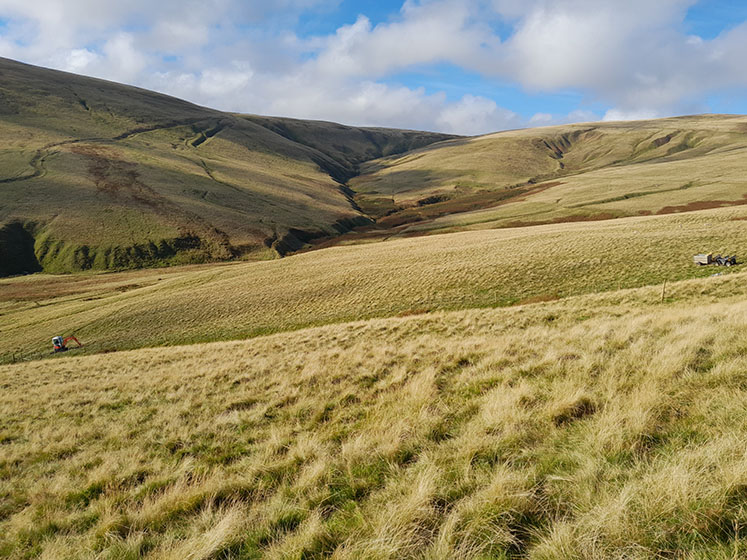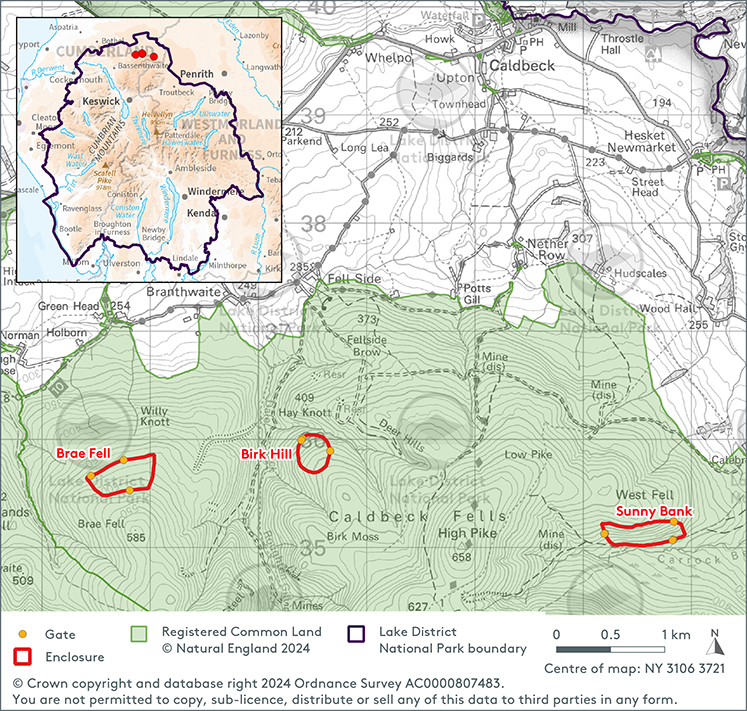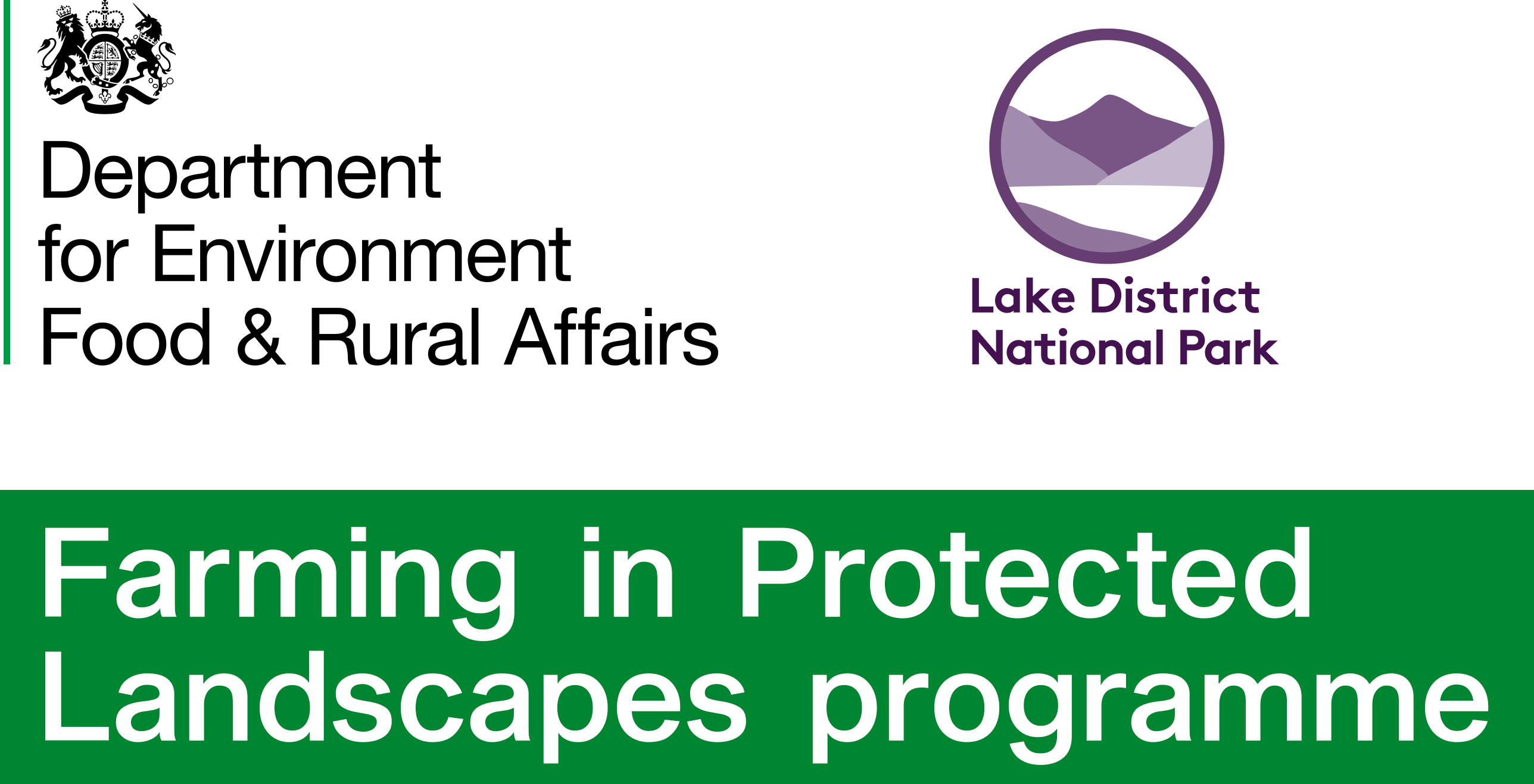
Update: 7.10.24
Living fells; the aim of the enclosures project is to enhance the recovery of upland heath plant communities by reducing grazing pressure; boosting biodiversity whilst supporting commoning.
The Lake District National Park Authority (LDNPA), the Caldbeck Commoners’ Association and Natural England are working together on this exciting project to fence off three upland areas of designated ‘Site of Special Scientific Interest’ on Caldbeck Common, totalling 36.2ha, for a period of five years. Fencing on common land typically requires Secretary of State, Section 38 approval however in this instance, as the area being fenced is less than 1% of registered common and for five years with the goal to improve the habitat, an exemption is made possible.
Caldbeck Common makes up part of the Skiddaw Group SSSI and Lake District High Fells Special Area of Conservation. It includes important habitats such as heather and moss moorland, blanket bog and juniper scrub. The area also supports large populations of upland breeding birds which are surveyed annually.
The areas for the enclosures have been carefully surveyed and selected for already having heathland plants present, such as heather and billberry, but with a low % ground cover. Because of this they are more likely to respond to a reduction of grazing pressure to make them denser, more robust and more species diverse. Heathland regenerated in this way is likely to become well-established and more able to withstand the reintroduction of the reasonably low level grazing once the fences are removed.
A further study was commissioned to further assess and recommend the most appropriate areas to fence to ensure minimal negative impact on the graziers, landscape, cultural and historic, biodiversity and access. The sites are located on different fells with sufficient distance and changes in topography to prevent negative cumulative effects. These sites offer the best outcome for balancing objectives of livestock management, commoning, nature recovery and delivery of public goods, including cultural goods associated with landscape character and visitor access and experience.
To ensure continued open access (CROW Act, 2000), not only have the selected sites been carefully chosen to ensure minimal impact to visitors on the common but two pedestrian gates will be fitted at each site to allow visitors to pass through.
The results of this pilot will help to inform future management decisions on the common and repeated fencing of targeted areas could be a valuable tool, helping us work towards improving habitats across the common. This approach not only helps to boost biodiversity in targeted areas but also allows commoners to continue with culturally valuable practices with minimal impact.

This project was funded by Farming in Protected Landscapes (FiPL) and LDNPA.
The project has also provided an opportunity to demonstrate reusable metal fencing in one of the three locations in the hope that this more durable fencing can be used in future projects helping to reduce the LDNPA’s organisational carbon footprint. The fenced area on Birk Hill is considered the most suitable site to trial this innovative fencing due to its remoteness and lack of well used paths in the area. As a relatively new fencing system, LDNPA will evaluate the effectiveness of the reusable fencing and invite interested land managers and organisations to discuss the teams’ experiences. The metal post system is designed to be sustainable, long lasting and reusable. Its design enables it to be easily disassembled at the end of the five-year period and reused in future projects.
As part of this experimental project, LDNPA will be commissioning a baseline ecological condition assessment and repeated assessments throughout and at the end of the project, to monitor and evaluate changes in plant species and populations throughout the 5-year project and beyond.
Existing data and anecdotal evidence suggest deer populations are not currently an issue on Caldbeck Common especially in open fell with limited shelterbelts in the High Fells, where the fencing has been constructed. However, on recommendation, we will undertake a thermal drone survey to provide a base line for deer present across Caldbeck common and evidence of browsing within the fenced areas will be monitored and recorded.
The temporary exclusion of livestock on carefully chosen areas of upland heath is experimental in design and engaging with stakeholders and interested parties in process, lessons learned and providing training opportunities is a key element of the project. There will be an opportunity to be involved in knowledge-sharing events nearing the end of this project, where methods and outcomes will be discussed with commoners, local communities and nature conservation organisations. As the project progresses, there will be further information available on these events.

